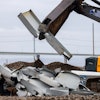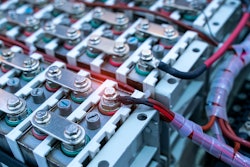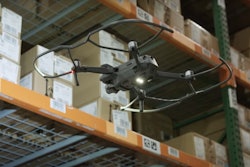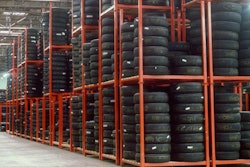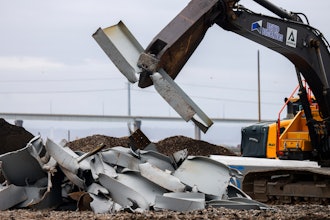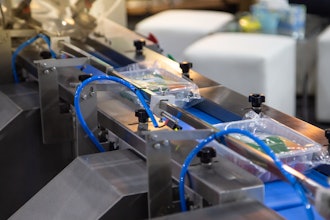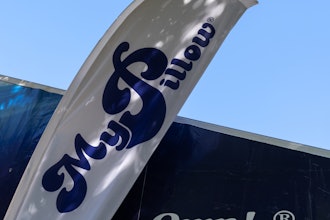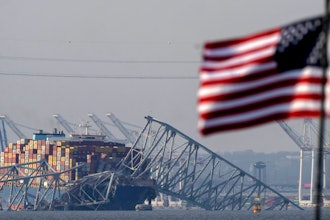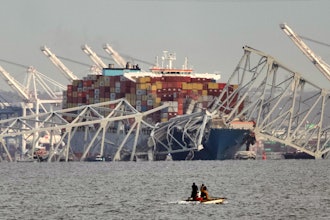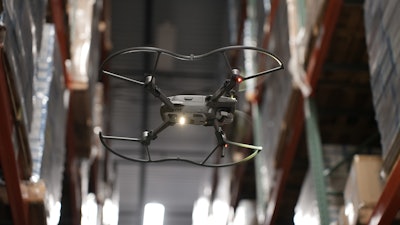
Let’s talk about what lean manufacturing looks like today. Some companies look to nearshoring and the elimination of shipping port congestion to operate more leanly. Others are evaluating their stock levels to produce just in time (JIT), without the risk of being too lean and having to halt production if they can’t find a single raw material.
Importantly, digital natives are bringing new AI-based technologies, including drone-powered inventory monitoring, to manufacturing facilities and warehouses.
So where did lean manufacturing begin? In 1950, Dr. William Edwards Deming consulted with Japanese managers and engineers to improve their work internally, between departments, and externally, with their suppliers and customers.
According to The W. Edwards Deming Institute, “Deming significantly contributed to the dramatic turnaround of post-war Japanese industry, and their rise to a world economic power. He is often called the ‘father of the third wave of the industrial revolution.’”
Then in the 1980s, Dr. Deming helped lead the resurgence of the American automobile industry, consulting with Ford, Toyota, Xerox, Ricoh, Sony and Procter & Gamble. These businesses drastically improved after adopting his methods. Deming pioneered concepts around lean manufacturing, and today The Lean Enterprise Institute and others use the acronym DOWNTIME to illustrate his philosophies. This stands for: Defects, Overproduction, Waiting, Neglect of Human Talent (Unused Talent), Transportation, Inventory, Motion and Excess Processing.
Applying new AI-based drone technology to a manufacturing line can combat some of these age-old waste types.
First, let’s start with an overview of drone-powered inventory monitoring. Drones fly autonomously through the warehouse, taking pictures of inventory locations. AI analyzes the pictures and, based on what’s in an inventory database, reports out matches, empties and exceptions.
 Gather AI
Gather AI
Here are some examples of how this solution can help reduce six of the eight wastes:
Overproduction
Overproduction occurs when more goods are produced than needed or before they’re needed. If a warehouse produces or receives excess inventory that isn't immediately required, it leads to overstocking. This ties up capital and storage space and can result in products becoming obsolete.
By using drones to do inventory monitoring, you can constantly monitor your finished goods inventory and ensure that you haven’t overproduced and have the right stock for shipping when you need it. Users of the solution report that they’re able to scan their full facility in two and a half days versus 90 days with traditional methods, ensuring increased inventory accuracy.
Waiting
Waiting waste refers to production delays caused by idle time, equipment breakdowns or inefficient processes. In manufacturing, this could be a line down scenario, where production processes are being starved because there isn’t enough inventory.
With drone-powered inventory monitoring, customers report improving their inventory accuracy by 70% as drones are able to count up to 900 locations per hour. High inventory accuracy means that raw materials are where they should be when they are needed for the line, eliminating line down.
Neglect of Human Talent (Unused Talent)
This involves not maximizing employee skills, knowledge and creative abilities. If managers only use warehouse employees for manual labor and fail to engage them in process improvement discussions, it’s a missed opportunity for creative problem-solving and innovation.
AI frees folks up to do what humans are good at. Cycle counting with autonomous drones relieves employees from doing manual inventory on forklifts and allows them to do more value-added activities like researching variances, auditing and training to support operations.
One customer of the solution was able to reallocate six cycle counters. They are now able to use people for higher level tasks including continuous improvement initiatives and fixing errors as opposed to finding errors.
Transportation
Transport waste occurs when materials or products are moved more than necessary within the production process. This can result from poor layout or disorganization, leading to extra handling and increasing the chances of damage and slowing down operations.
Drone-powered inventory monitoring helps employees find empty locations so there’s no wasted time driving forklifts around the warehouse. Also, accurate inventory reduces the number of ‘pallet emergencies’ which occur when a picker arrives at a location and the inventory is misplaced.
One AI drone customer was able to save five to seven shifts per day by knowing where the empty locations were.
Inventory
Inventory waste is the result of maintaining excess raw materials, work-in-progress or finished goods. An example in the warehouse could be keeping large amounts of inventory on hand to meet potential demand, resulting in increased holding costs, including storage and insurance expenses.
Drone-powered inventory monitoring can help manufacturing staff members see which pallets of product are expired, by searching for the lot code on the dashboard. When searching by lot code, you can find the locations where the product is stored, view images of the product at these locations and ensure the product is available for the manufacturing line.
Motion
Motion waste refers to any unnecessary physical movement of workers, such as bending, stretching or walking. People doing cycle counting is an unnecessary movement of equipment and people. Equipment is meant to move material - not meant for counting. Another example is when an operator goes to a pick location that is inaccurate in their system and has to search, resulting in unnecessary movement.
With drone-powered inventory monitoring, one warehouse reallocated $250K of material handling equipment because it wasn’t needed for cycle counting. Another reduced pallet emergencies from 20-30 per day to one to two per day.
In a warehouse setting, reducing these wastes involves optimizing processes, improving layouts, enhancing worker engagement and using drone-powered inventory monitoring to streamline operations. By addressing these wastes, warehouses can increase efficiency, reduce costs, improve quality and better serve their customers.
---
Evan Rago has over 15 years of experience helping manufacturing plants and warehouses optimize their material handling and inventory processes through innovative technologies. As a graduate of the University of Pittsburgh with a degree in Industrial Engineering, Rago is an expert in Lean/Six Sigma methodologies. He currently serves as the Sales Director at Gather AI, a drone-powered inventory monitoring solution. He is responsible for driving revenue growth and expanding the company's customer base.
 Gather AI
Gather AI

